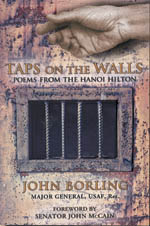A Military History of the Cold War, 1944–1962, by Jonathan M. House (University of Oklahoma, $45). House zeroes in on the era’s many small wars and revolutions as well as the new paradigms and tensions brought about by nuclear weapons.
The Leadership of Ulysses S. Grant, A General Who Will Fight, by Harry S. Laver (University Press of Kentucky, $32.50). A tightly focused study of the general’s leadership and what Laver calls his “analytical determination” as displayed at Vicksburg, Chattanooga, and beyond.
The Double V, How Wars, Protest, and Harry Truman Desegregated America’s Military, by Rawn James Jr. (Bloomsbury, $28). James traces the history of African Americans in service, from Crispus Attucks to today.
Global Crisis, War, Climate Change and Catastrophe in the Seventeenth Century, by Geoffrey Parker (Yale, $40). Parker, an MHQ contributing editor, looks at the conflicts and chaos rocking the world from Japan to the Americas during what historians call the “General Crisis.”
Napoleon, Life, Legacy, and Image: A Biography, by Alan Forrest (St. Martin’s, $31.99). Forrest, a British historian who has written extensively about the experience of the French soldier under Napoleon, looks at the general and empire builder as a product of his times as much as their creator.
The Insurgents, David Petraeus and the Plot to Change the American Way of War, by Fred Kaplan (Simon & Schuster, $28). The Pulitzer Prize–winning national security correspondent recounts how “COINdinistas”—counterinsurgency advocates such as Petraeus—challenged and overhauled orthodoxy within the U.S. military.
The Eagle Unbowed, Poland and the Poles in the Second World War, by Halik Kochanski (Harvard, $35). The first comprehensive military, political, and diplomatic account of Poles in a conflict that would see them lose almost a fifth of their countrymen.
A Military History of Scotland, edited by Edward M. Spiers, Jeremy A. Craig, and Matthew J. Strickland (Edinburgh University Press, $200). At almost 900 pages, this reference is a deep and detailed plunge into the long history of this small country.
Ninja, 1,000 Years of the Shadow Warrior, by John Man (William Morrow, $25.99). The British writer known for his popular histories of Asia takes on the murky history of the special forces of Japanese feudal society.
For Crew and Country, The Inspirational True Story of Bravery and Sacrifice Aboard the U.S.S. Samuel B. Roberts, by John Wukovits (St. Martin’s, $26.99). The veteran military chronicler spins the tale of the little destroyer escort that made a suicidal run at a Japanese battle group in the Battle of Samar to protect an invasion fleet. It was sunk, but 120 seaman survived three days in the water to return home as heroes.
Invisible Armies, An Epic History of Guerrilla Warfare from Ancient Times to the Present, by Max Boot (Liveright, $35). The small-wars expert delivers a sweeping account of unconventional warfare, from prehistoric tribal clashes to modern-day terrorism.
Coming Through Fire, George Armstrong Custer and Chief Black Kettle, by Duane Schultz (Westholme, $28). A gripping but complex narrative of the 1868 U.S. Army–Cheyenne clash at the Washita River that fueled Custer’s celebrity and embittered the Indians.
Churchill and Sea Power, by Christopher M. Bell (Oxford, $34.95). Bell, a respected historian of 20th-century maritime matters, defends the British leader’s checkered record as naval strategist and guardian of Royal Navy power.
A Higher Call, An Incredible True Story of Combat and Chivalry in the War-Torn Skies of World War II, by Adam Makos and Larry Alexander (Berkley, $26.95). A remarkable narrative about the famous 1943 encounter between German ace Franz Stigler and U.S. bomber pilot Charlie Brown—how Stigler passed up a chance to shoot down Brown, and the friendship they later developed.
Five Myths About Nuclear Weapons, by Ward Wilson (Houghton Mifflin Harcourt, $22). A nuclear nonproliferation expert challenges the conventional history of nuclear weapons—including the idea that the bombs dropped on Hiroshima and Nagasaki persuaded the Japanese to surrender in World War II.
38 Nooses, Lincoln, Little Crow, and the Beginning of the Frontier’s End, by Scott W. Berg (Pantheon, $27.95). A deep look inside the six-week Dakota Indian War that roiled the West during one of the darkest times of the Civil War.
Blackett’s War, The Men Who Defeated the Nazi U-Boats and Brought Science to the Art of Warfare, by Stephen Budiansky (Knopf, $27.95). Budiansky (Perilous Fight, Air Power) tells the little-known tale of British physicist Patrick Blackett and a small group of Allied scientists who led the effort to blunt the threat of the German submarines.
Intrepid Sailors, The Legacy of Preble’s Boys and the Tripoli Campaign, by Chipp Reid (Naval Institute, $35.95). Reid digs into the details of the war waged by Commodore Edward Preble, Stephen Decatur Jr., and the fledgling U.S. Navy against the Barbary pirates.

Poetry
Taps on the Walls, Poems From the Hanoi Hilton, by John Borling (Master Wings, $19.95). Shot down over Vietnam, Borling composed these poems as a POW. Using a tap code, he rapped them out with his knuckles to other prisoners—a “valuable source of mental stimulation and discussion,” writes his fellow internee John McCain. More from MHQ about Borling and his book.
Fiction
A Possible Life, A Novel in Five Parts, by Sebastian Faulks (Henry Holt, $26.99). In this time-shifting narrative (akin to David Mitchell’s Cloud Atlas), the bestselling British author ties five novellas together into a pleasing package. But the fine prose does little to lighten the frank assessment of the first character as he experiences the horrors of a Nazi death camp.
Coming Soon
Those Angry Days, Roosevelt, Lindbergh, and America’s Fight Over World War II, 1939–1941, by Lynne Olson (Random House). Shadow Warrior, The Life of William Egan Colby, by Randall B. Woods (Basic). The Sleepwalkers, How Europe Went to War in 1914, by Christopher Clark (Harper).





